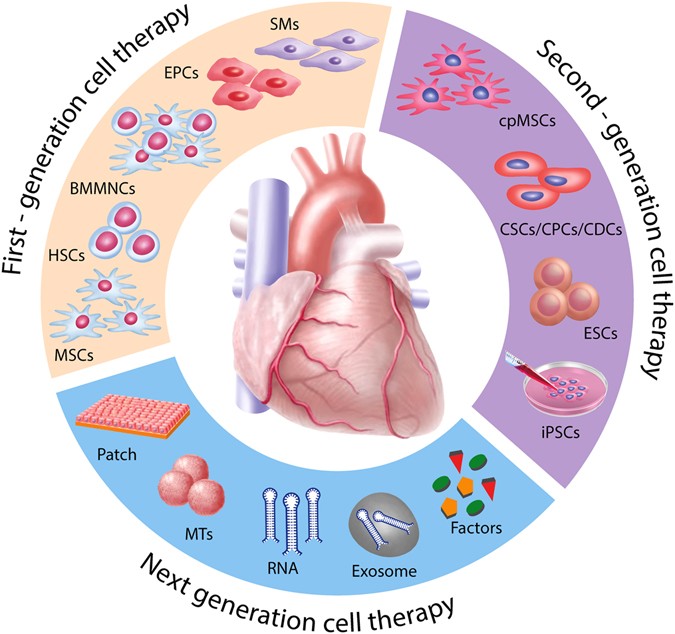Table of Contents
The authors note obstacles that remain, including raising the engraftment success and cell survival. Due to the fact that the ISCI and Miller Institution are leaders in this field, the authors likewise worry the requirement to standardize definitions and end results procedures in the area. "The Hare Laboratory continues to be at the leading edge of pioneering new therapies in this crucial clinical domain.
Now we are exploring how to harness such stem cells to aid people heal their very own broken hearts."The study is guided by the Cedars-Sinai Heart Institute, with the cooperation of the Johns Hopkins College, where Dr. Marbn functioned before signing up with Cedars-Sinai in 2007. The 24 people taking part in the study have hearts that were harmed and scarred by cardiac arrest.

It takes around 4 weeks for the cells to multiply to numbers enough for healing usage, approximately 10 to 25 million. In the third and final step, the now-multiplied stem cells are re-introduced right into the person's coronary arteries during a second catheter procedure. All individuals in the research had to have skilled cardiovascular disease within 4 weeks before enrolling in the study task.
Later on this summer season, it is expected that 12 even more patients will undergo procedures to get 25 million stem cells, while 6 additional individuals will be kept track of as controls. The first individual, Kenneth Milles, a 39-year-old controller for a little construction company in the San Fernando Valley, experienced a heart attack on May 10 due to a 99 percent blockage in the left anterior descending artery, a major artery of the heart.
The process to grow the cardiac-derived stem cells associated with the study was developed by Marbn when he was on the faculty of Johns Hopkins College. The college has applied for a license on that particular copyright, and has actually certified it to a firm in which Dr. Marbn has a monetary passion.

All funding was originated from the National Institutes of Wellness, the Donald W. Reynolds Foundation and Cedars-Sinai Medical Facility. Marbn holds The Mark Siegel Household Structure Endowed Chair and Director of the Heart Institute.
Is stem cell therapy right for Atherosclerosis with regenerative medicine?
Heart failure is an acute or persistent condition that affects millions of people worldwide. The most commonly accepted methods of therapy typically consist of symptom monitoring and medication considered life, so the worry brought on by the condition is hefty. Stem cell therapy for cardiac arrest has actually become a new way to deal with and take care of the core of the disease.
Nonetheless, stem cell therapy can aid to ease signs and symptoms and boost the heart's pumping capacity. This therapy uses the capability of stem cells to self-regenerate and self-heal. Following the admission of stem cell shots for heart disease, numerous mechanisms enter into play: Stem cells for cardiac arrest promote the development of specialized cardiac muscle mass cells and regrow harmed cells, improving the heart's pumping capacity.
These are types of grown-up stem cells that are gotten from bone marrow, fat cells, and skin cells. These are the most typical and well-researched types of stem cells.
These are obtained from embryos and have the pluripotent possibility to change into any kind of cells, consisting of heart ones. The primary trouble with these cells is that, as they are extracted from embryos, they have many ethical and lawful limitations and are just used in certain scenarios. for the factors stated over.
Innovative approach to Peripheral Artery Disease via regenerative medicine
These cells come from the heart and are fit to heart repair service. Please, contact our medical expert to discuss your health and wellness problem with a specialist in regenerative medication. You can likewise leave your call information for a callback. It is free and personal. Clinical Advisor, Swiss Medica physician The application and treatment of stem cell therapy includes 5 steps: Clients start with an on-line assessment with our medical consultant and are then reviewed by a cardiologist, that will certainly get the required clinical background, do blood tests, and request imaging research studies to determine whether stem cell treatment for heart failing is a viable option.
We administer stem cells via pain-free stem cell injections for coronary infarction. A very trained doctor will certainly inject refined stem cells into the bloodstream; the whole treatment takes less than an hour. After finishing the heart disease stem cell treatment procedures, our patients will be checked for any type of complications and outcomes.
Navigation
Latest Posts
Exploring stem cell therapy for High Blood Pressure
Is stem cell therapy for Peripheral Artery Disease you should know about
How to access stem cell therapy for Peripheral Artery Disease